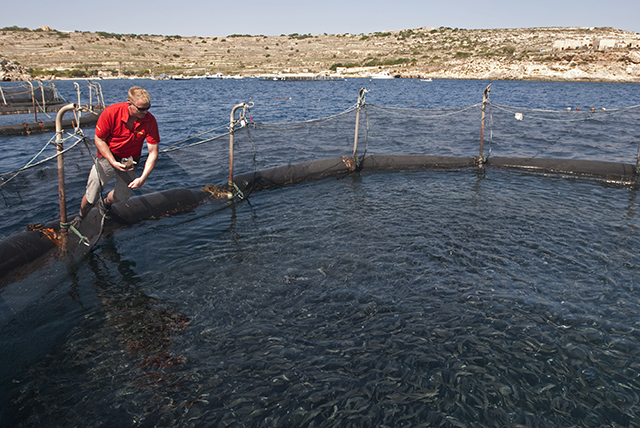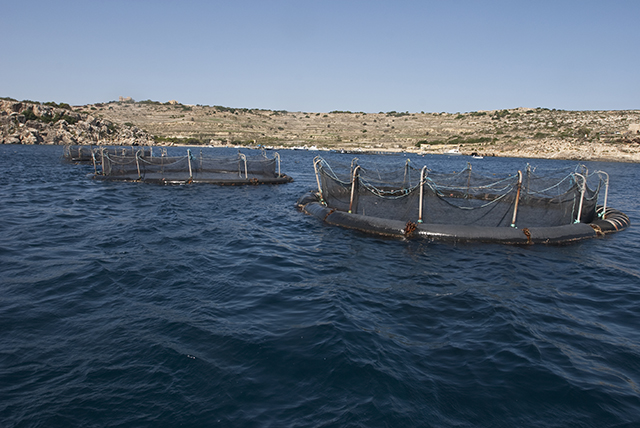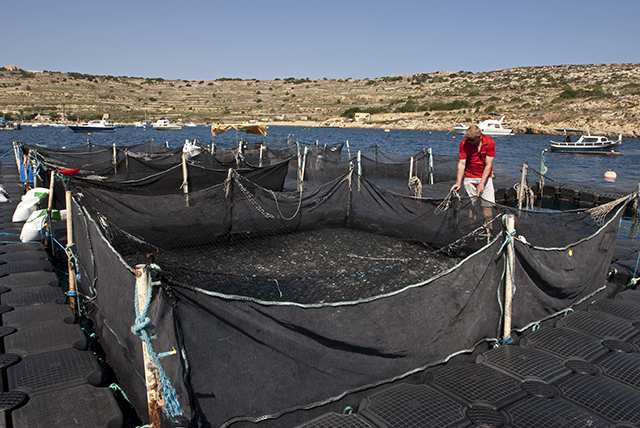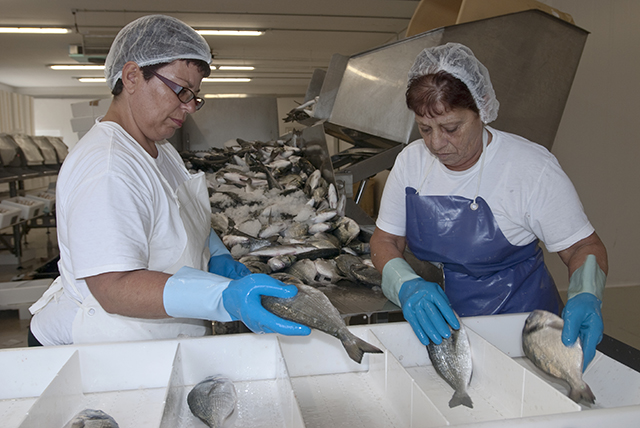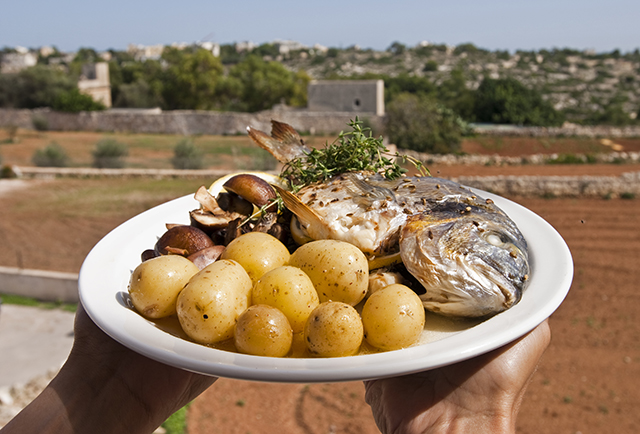Marine Life & Conservation
Aqua Farming: Fish For Thought
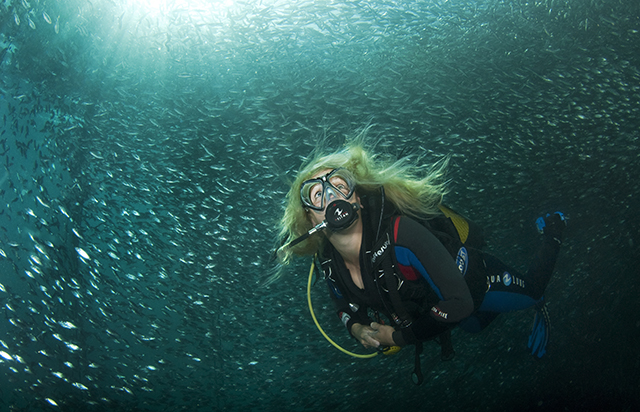
I would love to turn back the clocks and see the underwater world through Jacques Cousteau’s eyes. What an enviable experience – sailing the oceans, exploring pristine reefs thriving with marine life. But alas this is 2015, and as a globe-trotting scuba diver-come-photographer I am acutely aware of the problems facing our planet. Fish provide us with a vital food source but natural stocks are dwindling fast, in some cases so fast that a number of species including tuna are already on the IUCN critically endangered list. I can understand this is a complex situation, especially when there are mouths to feed and livelihoods at stake. Aqua farming may well be a viable solution.
In the quest to learn more I met up with Jes Brinch-Iverson, marine biologist and production manager for Pisciculture Marine De Malte (P2M) Limited. Jes, who has been associated with the company for the past 20 years, agreed to talk to me about the whole ‘farming’ process from its fingerling beginnings right through to serving up on a plate. The Maltese climate (water temp between 14-28 degrees) is ideal for cultivating sea bass (Dicentrarchus labrax), gilt-head sea bream (Sparus aurata) and meagre (Argyrosomus regius). Jes said they are also considering farming amberjacks (Seriola dumerili) sometime in the future.
In all P2M have 19 storage pens at St Pauls Bay and another 5 at Mellieha Bay. Jes said it’s difficult to get permits, especially for the inshore sites. Although the demand for fish farming is increasing there are strict regulations in place dictating depth limitations, environmental issues and proximity to tourism. P2M doesn’t receive any financial help from the Maltese government. Jes said “we do get some European funding for research into new products and improving quality”.
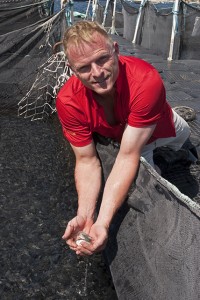 We hopped aboard one of P2M’s work boats and sped across to a cluster of small rectangular shaped pens located just a few hundred metres from the coastline. Jes wanted to show me a new batch of sea bream that had just arrived. The fingerlings or juveniles are supplied by companies from Spain, Italy and France. They are transported in trucks or put on cargo ships in large tanks. Oxygen is pumped into the water and the temperature reduced. This slows down the metabolism of the fish. A standard shipment is around 150,000 fingerlings. During the course of the journey there is about a 1% mortality rate.
We hopped aboard one of P2M’s work boats and sped across to a cluster of small rectangular shaped pens located just a few hundred metres from the coastline. Jes wanted to show me a new batch of sea bream that had just arrived. The fingerlings or juveniles are supplied by companies from Spain, Italy and France. They are transported in trucks or put on cargo ships in large tanks. Oxygen is pumped into the water and the temperature reduced. This slows down the metabolism of the fish. A standard shipment is around 150,000 fingerlings. During the course of the journey there is about a 1% mortality rate.
Jes scooped up a handful of the silvery sea bream fingerlings. He said “only the best quality fish are selected”. The fingerlings are around 100 days old when they arrive at the farm. Each little fish was roughly the size of my little finger and weighed approx 2g. Growth is related to feed and water temperature. Normally the fish are kept inside the holding pens for around 12 – 16 months before harvesting.
The floating pens basically comprise of a large doughnut shaped rubber float with an encompassing net like structure attached below. I watched Jes feeding the hungry hoard. The water surface was literally boiling with activity. The fish are fed twice a day. The fish meal is a mixture of soya, fish oil and vegetable. Proportionately it’s around 50 percent soya. The difference in taste from farmed and naturally wild fish is not significant and the texture is still the same. Jes said “we use high quality feed”. They regularly monitor the health of the fish. Jes said “problems with diseases are very rare. We don’t use any chemicals in the process”. There is also a team of scuba divers on hand to check the nets for holes and do routine maintenance/cleaning tasks. After a particularly bad storm in March 2012 they lost around 8% of the total stock from damaged pens. The local residents had an absolute field day catching all the fish and taking them home for a free bumper supper.
I wanted to try and get some underwater pictures of the farmed fish, so Jes suggested jumping into a 400 cu metre pen which was about 5 metres in diameter and 5 metres deep. The pen was populated with around 100,000 sea bass of sizes between 30 – 40g, which were roughly the length of my hand. Just to make my pictures a little more interesting I invited along local scuba diver Trudy Kerr. This would also add some perspective of size and scale. Both Trudy and Jes were regulars at Maltaqua dive centre based at St Pauls Bay.
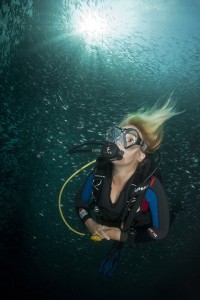
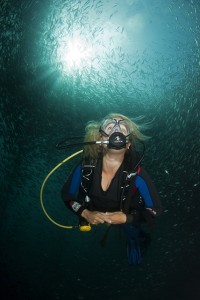 Just before entering the water we encountered a disastrous show stopper of a problem. Trudy’s semi-dry suit zip had stuck open. Unfortunately the zip in question was located right by Trudy’s cleavage. Trudy asked if we should abort the dive. I looked at Jes and he looked back at me. In about 3 micro seconds we made a joint executive decision to soldier on despite this major setback. So the sea bass ended up getting slightly more of an eyeful than expected. No wonder why they were flying around the pen in a complete frenzy! I really enjoyed being inside the pen surrounded by so many fish. I spent more than 45 minutes taking pictures of the swirling shoal. If I have one complaint to make, the fish could have been a tad bigger. Otherwise the visibility wasn’t too bad, there wasn’t too much detritus (fish poo) floating about and the lighting was okay. Trudy’s zip had by that point miraculously repaired itself.
Just before entering the water we encountered a disastrous show stopper of a problem. Trudy’s semi-dry suit zip had stuck open. Unfortunately the zip in question was located right by Trudy’s cleavage. Trudy asked if we should abort the dive. I looked at Jes and he looked back at me. In about 3 micro seconds we made a joint executive decision to soldier on despite this major setback. So the sea bass ended up getting slightly more of an eyeful than expected. No wonder why they were flying around the pen in a complete frenzy! I really enjoyed being inside the pen surrounded by so many fish. I spent more than 45 minutes taking pictures of the swirling shoal. If I have one complaint to make, the fish could have been a tad bigger. Otherwise the visibility wasn’t too bad, there wasn’t too much detritus (fish poo) floating about and the lighting was okay. Trudy’s zip had by that point miraculously repaired itself.
I had noticed quite a few local fishermen dangling rods close to the holding pens but couldn’t quite fathom out why, unless of course some of the fish managed to escaped from time to time. I heard Trudy shouting through her regulator and pointing outside the pen. I followed her line of sight and saw a giant trevally shaped predatory fish circling us. It was absolutely massive (1.5 metres long) and made me wonder what else might be out there beyond the mesh. Now that really was a scary thought… especially with the tuna pens being so close…
When we were safely back on board Jes took us over to one of the offshore pens full of larger sea bass. Jes said the 3,000 cu metre enclosure was around 15 metres in diameter and 12 metres deep. But the visibility was not so good inside this pen and the skittish fish were not so easy to photograph. We found 100’s of sea hares lying on the bottom which kept Trudy occupied for ages. Sea hares are herbivores so there must have been some kind of algae or plant life growing inside the pens that they liked to eat; or was it the fish poo? After 25 frustrating backscatter filled minutes I gave up taking photographs. I noticed there was a handful of dead fish bobbing about on the surface. Jes said this was the normal fall out rate. I’m not sure what had killed them and should have asked the question.
Before returning to the jetty Jes showed me the special harvesting boat. It works just like a giant vacuum cleaner sucking up the fish and passing them through a fast freeze unit. The cold shock instantly kills the fish. Any delay will affect the quality. They are then transferred to the nearby packing and processing plant. P2M had recently moved to new purpose built premises which also included a storage facility and office space. The company is privately owned and presently employs 51 people. Jes took me on a tour around the new plant. They were in the middle of processing a batch of sea bream. I watched the bream being unloaded and sorted onto a conveyor belt. The fish are rinsed, packaged up into boxes (at around 7kg a box) and transferred to ice trucks ready for delivery. I was impressed. The entire process took no more than 45 minutes.
The fish are not gutted and filleted, they are left whole. Jes said that the ideal ‘portion’ size for consumers weighs between 350 and 450g. On the open market prices are around 4 to 5 euro per kg. There are presently 6 fish farms in Malta exporting around 2,000 tons of cultivated fish each year of which a large percentage is shipped to supermarket chains in Italy. Delivery times from the holding pens to the local Maltese restaurants can be just a few hours. International deliveries usually take up to 24 hours. Jes said the fish have a 12-day shelf life.
I had learnt that Aqua farming doesn’t come cheap and there are many costs to consider. P2M do make a profit but fish are deemed an expensive commodity and demand is not so high. Jes said “the supermarkets dictate the prices and make most of the money”. Malta is planning to expand the aqua farming industry over the coming years. In my mind this is great news. More farmed fish means less fish taken from the sea which gives me a better chance of getting some half decent photographs.
Just to round off my day Jes handed me a sea bream sample for taste testing. I had never eaten sea bream before so was really looking forward to checking it out. The fish didn’t take very long to prepare or cook, especially as I wasn’t cooking it! I thought the roasted sea bream had quite a delicate texture and most of the flavour seemed to come from the herbs and the lemon. There were a few bones to contend with, but what did I expect – this was a fish! I would definitely eat it again and a bottle of chilled Gavi is the perfect accompaniment.
What are your views on aqua farming? Let us know in the comments section below.
Marine Life & Conservation
Experience the Greatest Shoal on Earth followed by few nights with Sharks next month at some really great rates with Seas4Life (Watch Video)
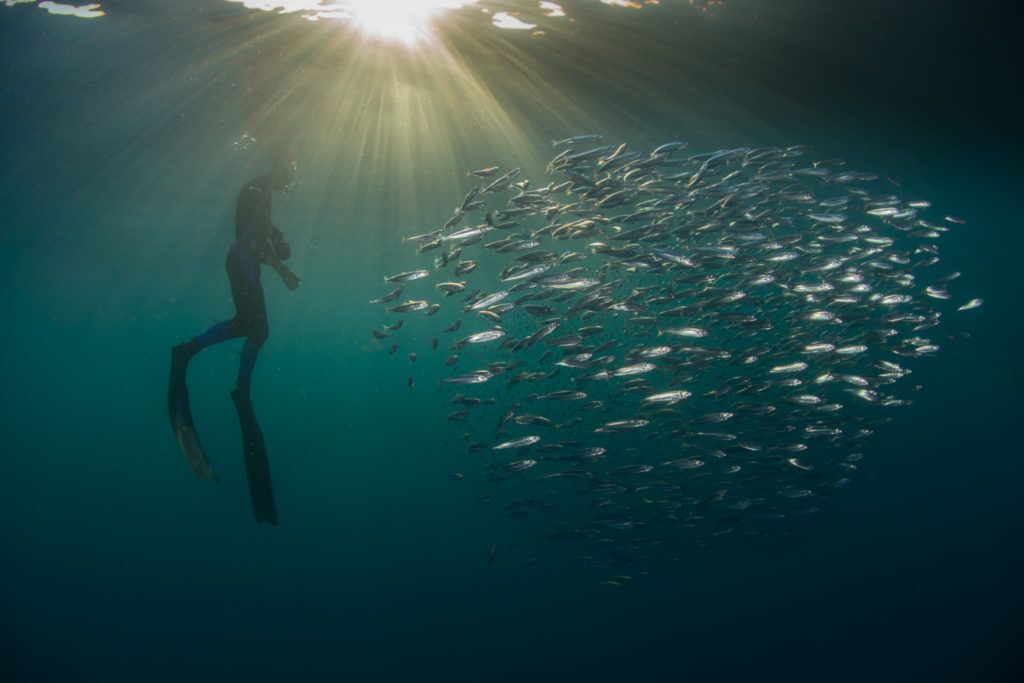
An Exclusive, Expert Led, One-Off experience…
For just a few short weeks each year – end of May through to end of June – the mighty Sardine Run showcases the epic efforts of supreme marine predators working in unison to feed off the migrating sardines in a most dynamic flurry of action. End of June early July is also when the shark season begins – just imagine it is a David Attenbourgh Blue Planet experience.
In case this natural wonder wasn’t exciting enough – majestic humpback whales just happen to start their annual migration back up north adding to this phenomenal experience.
Its a must for the adventurous soul.. Lots of love, laughter, and smiles.
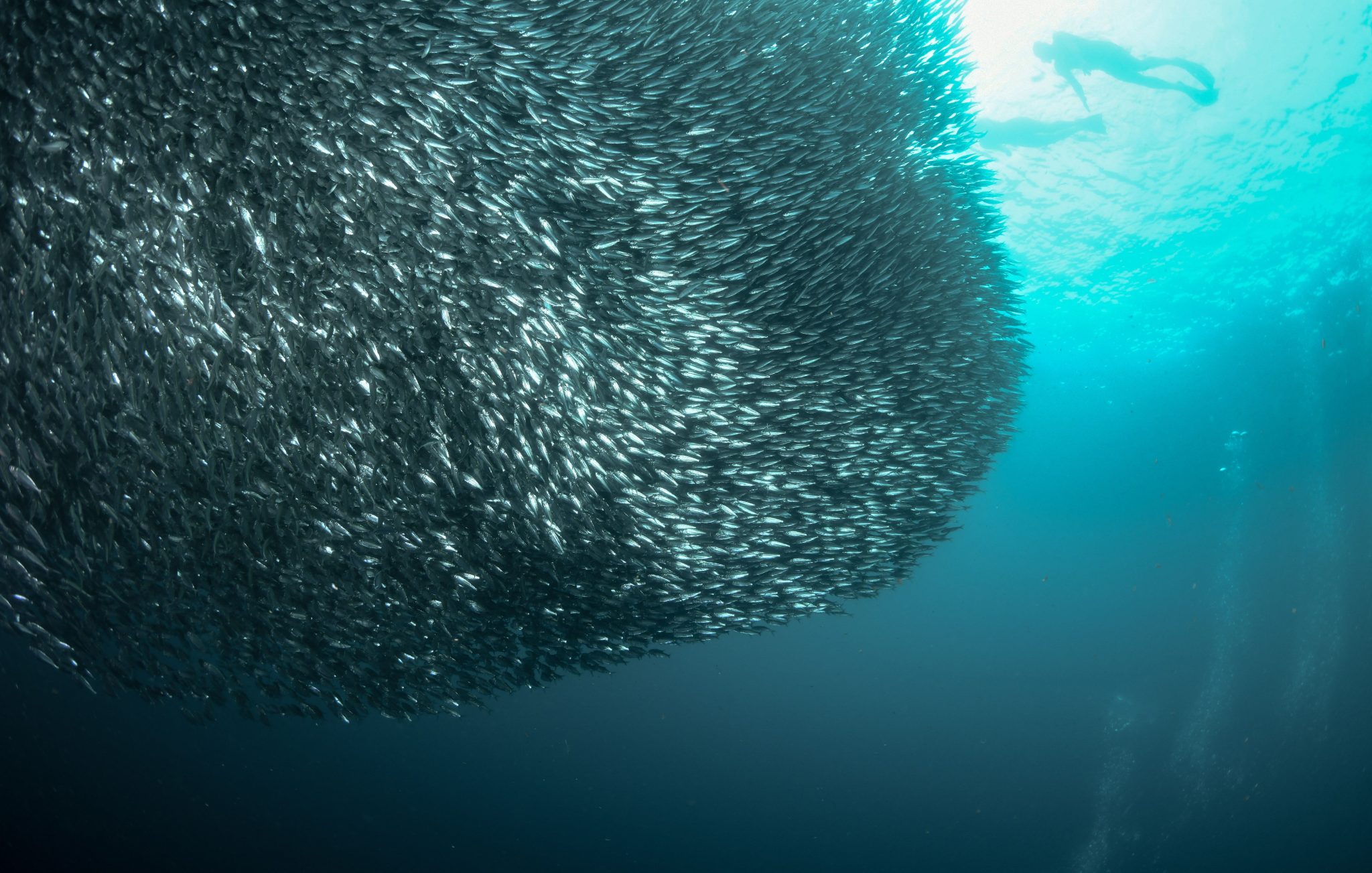
This is a feeding event of unmatched proportions. Thousands of common dolphin charge after the shoals, separating them into bait balls, with their ‘dolphin bubble technique’, bring them to the surface. Watched from the air by the cape gannets, who then launch a massive aerial assault on the sardines. They are also easy pickings for shivers of bronze whaler, dusky and black tip sharks, seals and lastly the huge mouths of Brydes (Brooders) whale that can consume an entire bait ball in one single lunge!
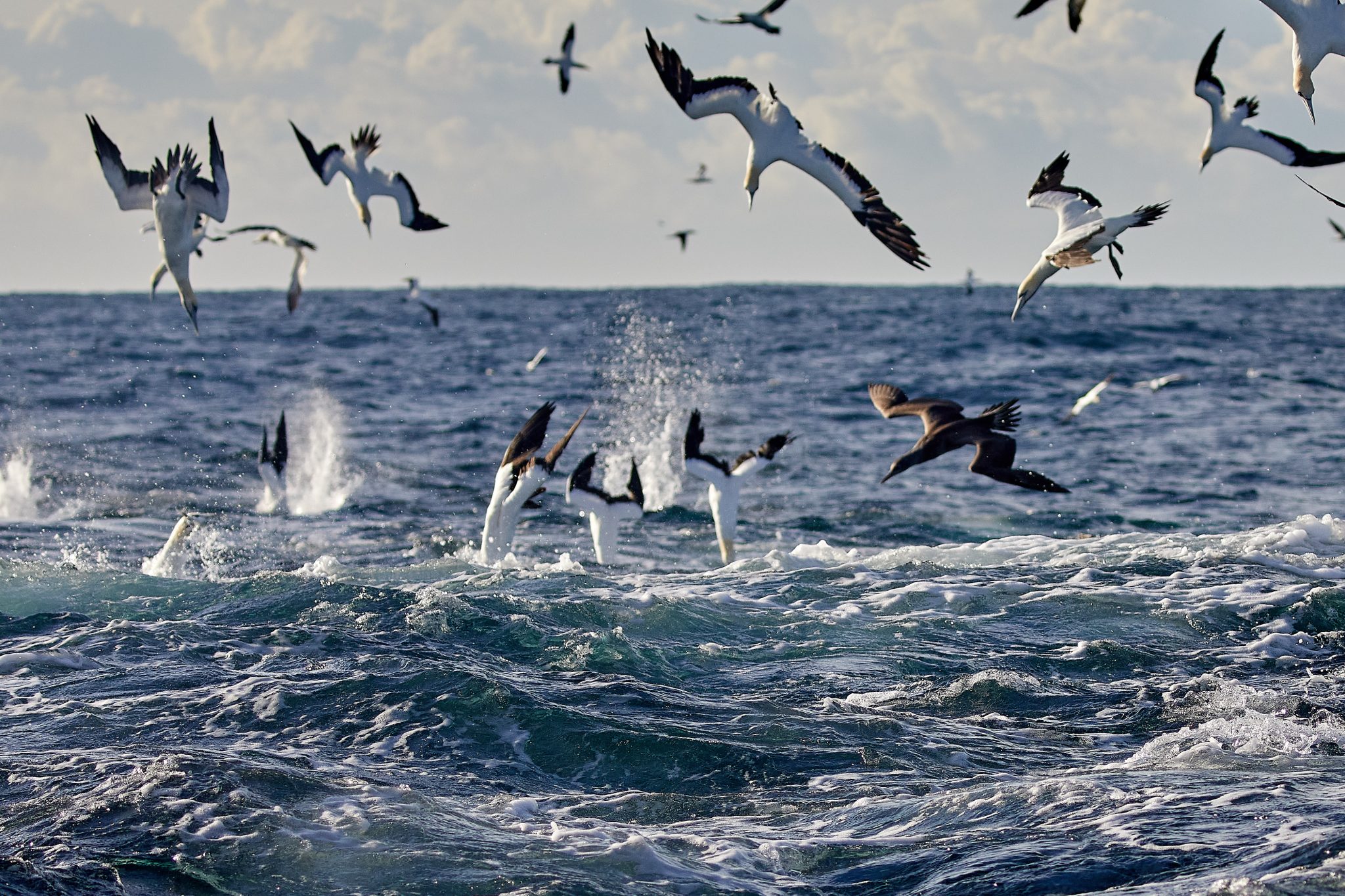
Seas4Life is offering an incredible deal for this year’s Sardine Run. Here are the details:
Date: June 23rd – July 2nd 2024
Type: Family, group, couples, solo travellers. Min of 4 pax – max 8 pax
Location: South Africa
Nights: 9 nights/10 days
Rates originally started at USD$9,705 per person 9 Nights PP, based on 5 pax on the trip. However, you can now experience the Greatest Shoal on Earth followed by some seriously unforgettable shark action for just USD$7,100 per person.
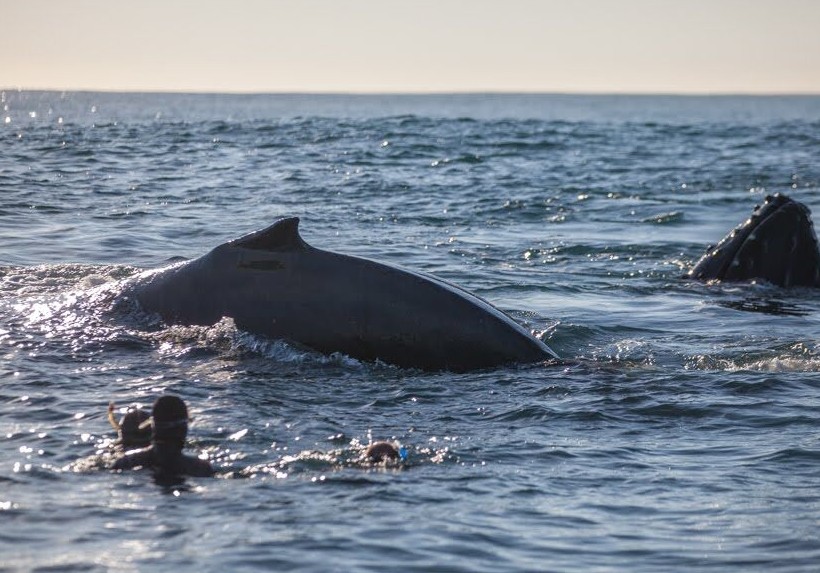
Includes:
- 5 night stay at Gulu Game Reserve (23rd – 28th June)
- 4 night stay at Africa Oceans Manor (28th June– 2nd July)
- 9 nights fully catered stay with breakfast, packed lunch and dinner
- Welcome drinks and selected alcohol (local beers, wines and spirits)
- 4 Sardine Run Days and 3 full Shark Research Days – 1 morning being with Great White
sharks - Guiding by expert marine conservationists, shark specialists and ocean enthusiasts
- Transfers to and from the airports and to and from the launch base and hotels; and on 28th June from Gulu Game Reserve to African Oceans Manor along the Southern African Coastline and parts of the Garden Route
- Privately chartered 26 foot (8m) semi-rigid dive boat (South African Maritime Safety Authority, licensed to travel up to 40 Nautical miles offshore) with two 140hp motors
- Snorkelling and scuba diving gear
- All activities as outlined in the itinerary
- Use of Gulu Private Resort and African Oceans Manor facilities including rejuvenating in their spa, use of the pool, playing tennis, hiking or fishing… (these will be charged separately if used)
- Marine conservation contribution to the shark research unit
- Offsetting your carbon through Planet Moja
- AMREF
- Lead shark scientist Nico, sardine run expertise of ScubaXursions
- Julie as lead guide
- Lots of smiles, laughter and many memories made
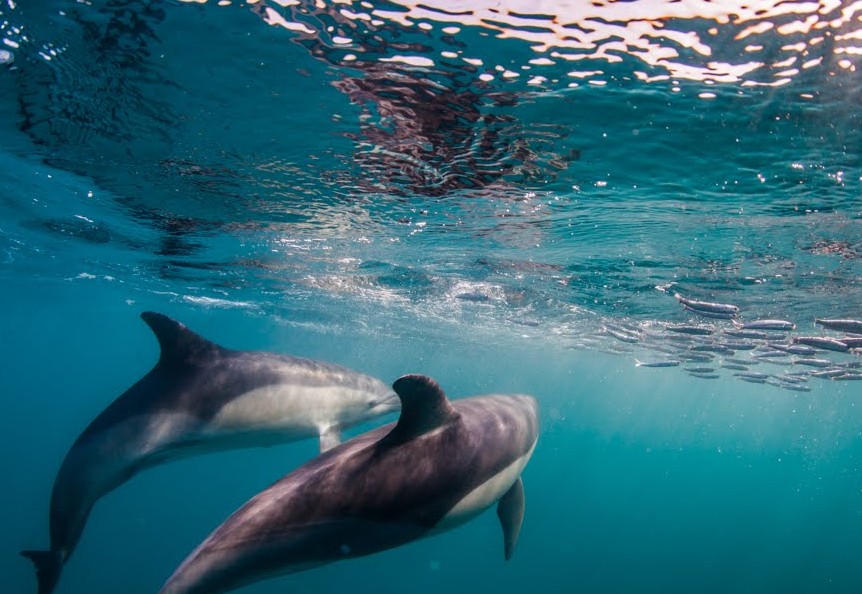
Excludes:
- International flights
- Visas and taxes (airport, government and tourist)
- Scuba diving, free diving and underwater photography courses
- Alcoholic drinks (unless stated) champagne, luxury spirits and selected wines
- Activities not outlined above
- All photographic gear
- DAN Insurance, Scuba and/or photographic gear insurance
- All additional park and/or conservancy fees if applicable
- Travel and health insurance
- Items of a personal nature
- Gratuities
For more information or to book, contact Seas4Life now:
info@seas4life.com / +254 723 639 640 / seas4life.com
Blogs
Heading out on the water this Summer? Watch for manatees
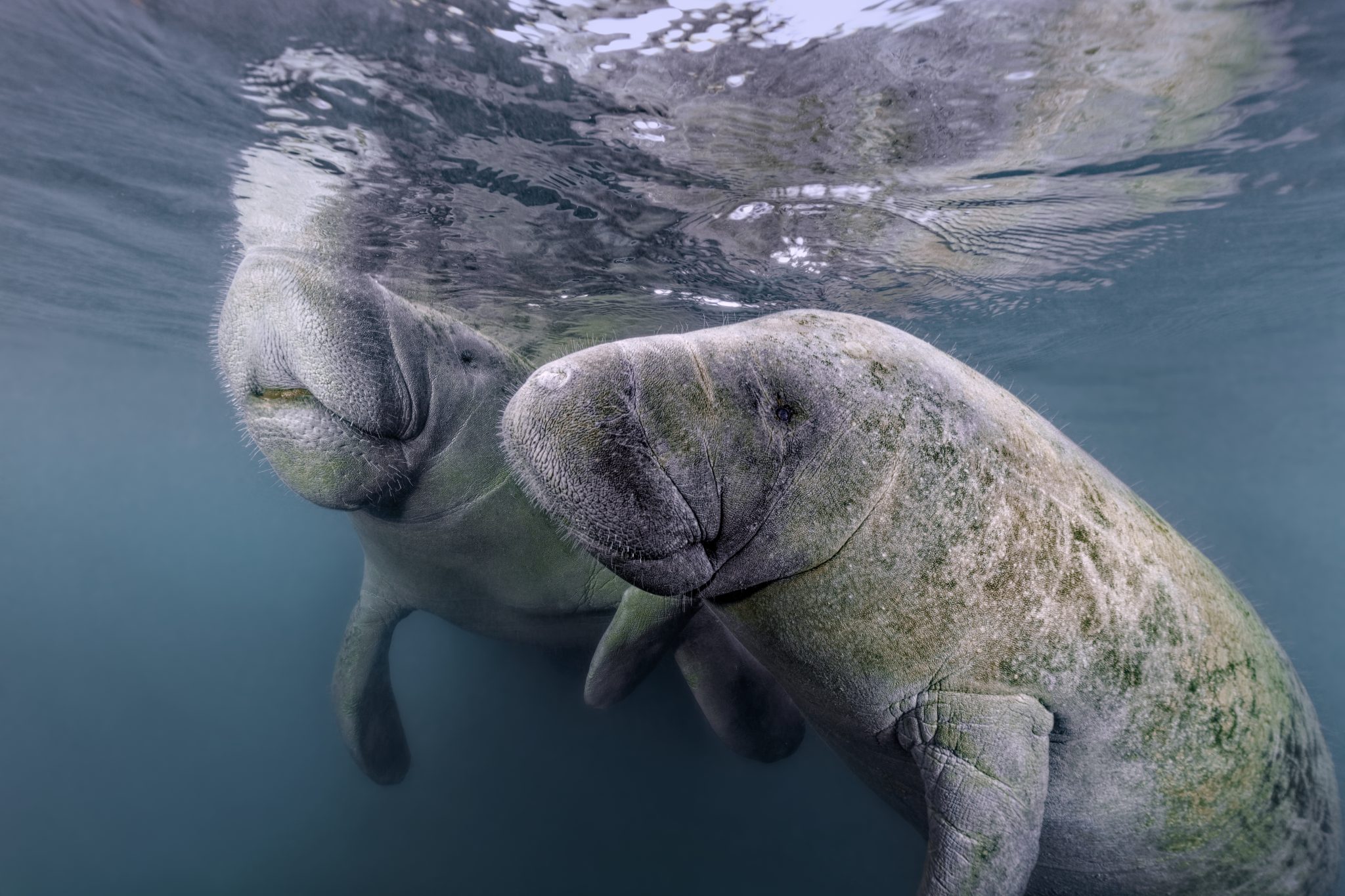
As National Safe Boating Week approaches, Save the Manatee® Club is urging boaters, and anyone that enjoys Florida’s waterways, to respect and protect the defenseless manatees that inhabit our shared waterways. From May 18 to 24, leading up to Memorial Day Weekend, the campaign aims to raise awareness about recreational boating safety and the importance of safeguarding imperiled manatees during the summer boating season. This week also emphasizes the importance of encouraging boaters to enroll in a boating safety course.
Manatees are semi-migratory marine mammals that are commonly found in shallow estuaries, bays, rivers, canals, and coastal areas throughout Florida and neighboring states. With some manatees venturing as far west as Texas and as far north as Massachusetts, collisions between these gentle giants and watercraft have become distressingly frequent. Boat propellers and high-speed collisions pose significant threats to manatees, often resulting in severe injuries or even death.
Save the Manatee Club is calling on all water enthusiasts to follow essential manatee safety tips to ensure the well-being of the imperiled manatee:
- Obey Speed Zone Signs: Familiarize yourself with and adhere to posted speed limits to prevent collisions with manatees.
- Reduce Glare with Polarized Sunglasses: Wear polarized sunglasses to enhance visibility and spot manatees below the water’s surface.
- Recognize Manatee Signs: Learn to identify signs of manatees in the area, such as swirls or flat spots on the water caused by their movements.
- Respect Manatee Sanctuaries: Keep a safe distance from posted manatee sanctuaries and avoid pursuing or harassing these marine mammals, as it is illegal and can disrupt their natural behaviors.
- Report Distressed Manatees: In Florida, promptly report distressed, injured, tagged, or orphaned manatees to the Florida Fish and Wildlife Conservation Commission (FWC) at 1-888-404-FWCC (3922). Outside of Florida, report sightings to the appropriate state agency or rescue organization. A list of agencies to contact is available at savethemanatee.org/report.
- Protect Seagrass Beds: Avoid boating over seagrass beds and shallow areas where manatees may be feeding. Stick to deep water channels while remaining vigilant, as manatees also utilize these channels during their travels.
- Dispose of Fishing Line Responsibly: Anglers should properly dispose of or recycle used fishing line to prevent entanglement hazards for manatees.
“Each year, National Safe Boating Week provides an excellent reminder for all of us to be aware that we share our waterways with vulnerable manatees,” emphasized Patrick Rose, Aquatic Biologist and Executive Director of Save the Manatee Club. “With the recent Unusual Mortality Event on Florida’s East Coast claiming an alarming number of manatees’ lives, it is more crucial than ever to prevent preventable deaths caused by watercraft collisions. By following manatee-safe boating guidelines, such as obeying speed zones and remaining vigilant for manatees, everyone on the water can contribute to the protection of these gentle giants.”
Save the Manatee Club offers a range of free materials to help safeguard manatees and raise awareness about manatee-safe boating practices. Shoreline property owners and park or marina managers can order aluminum dock signs to alert others about the presence of manatees in their areas. Boaters and paddlers can request packets containing a safety tips card, a waterproof boat banner, and a decal to display on their vessels, providing the number to report manatees in distress. To view and request these materials, visit savethemanatee.org/resources. Save the Manatee Club will also be hosting a live webinar for National Safe Boating Week on Tuesday, May 21st at 6pm EST. To register, visit savethemanatee.org/register.
-

 Blogs4 weeks ago
Blogs4 weeks agoDive Indonesia Part 3: Dive into Lembeh Trip Report
-

 Gear Reviews1 month ago
Gear Reviews1 month agoGEAR REVIEW – Revolutionising Diving Comfort: The Sharkskin T2 Chillproof Suit
-

 News3 months ago
News3 months agoPADI Teams Up with Wellness Brand Neuro to Drive Ocean Change and Create a Blue State of Mind
-

 Blogs2 months ago
Blogs2 months agoMurex Resorts: Passport to Paradise!
-

 Blogs3 months ago
Blogs3 months agoDiver Discovering Whale Skeletons Beneath Ice Judged World’s Best Underwater Photograph
-

 Blogs2 months ago
Blogs2 months agoSeagrass Awareness Month brings critical food source for Manatees to centre stage
-

 Marine Life & Conservation3 months ago
Marine Life & Conservation3 months agoSave the Manatee Club launches brand new webcams at Silver Springs State Park, Florida
-
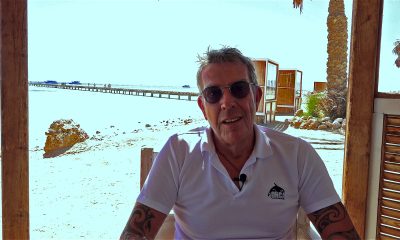
 Blogs2 months ago
Blogs2 months agoSOMABAY: Scubaverse interviews Wolfgang Clausen, General Manager, ORCA Dive Clubs


